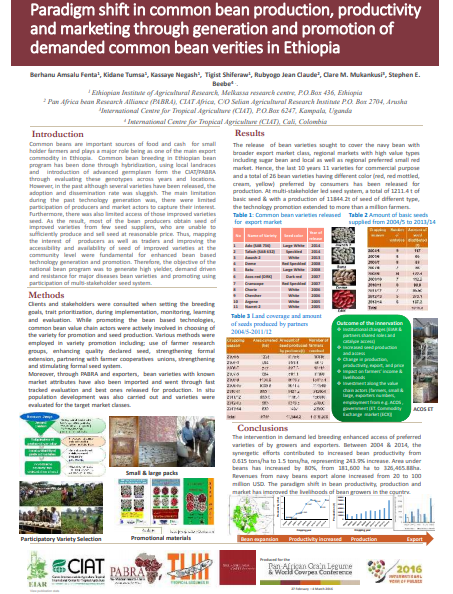Paradigm shift in common bean production, productivity and marketing through the generation and promotion of in-demand common bean varieties in Ethiopia
Summary
In Ethiopia, common bean breeding has been done through the introduction of advanced germplasm from CIAT, local cross-making efforts, and evaluations of genotypes across years and locations. Through PABRA, bean varieties with known market attributes have also been imported and went through fast-tracked evaluations, with the better-performing varieties released. In-situ population development was also carried out and the varieties were evaluated for target market classes. Their release targeted broader export markets, regional markets with high value types including sugar bean, and local as well as regionally preferred small red markets. Clients and stakeholders were consulted when setting breeding goals and trait prioritization, and during implementation, monitoring, learning, and evaluation activities. While promoting the bean-based technologies, common bean value chain actors were actively involved and chose varieties for promotion and seed production. Various methods were employed in variety promotion, including the use of farmer research groups, enhancing quality declared seed, strengthening formal extension, partnering with farmer cooperatives and unions, and strengthening and stimulating formal seed systems. Between 2004 and 2014, these synergistic efforts contributed to an increase in bean productivity – from 0.615 tons/ha to 1.5 tons/ha, representing a 243.9% increase. The area under bean cultivation has also increased by 80% – from 181,600 ha to 326,465.88 ha. Revenues from navy bean exports alone increased from $20 million to $100 million. The paradigm shift in bean productivity, production, and markets has improved the livelihoods of bean growers in Ethiopia. Results suggest that the value chain, client-led bean breeding, and promotion model can be adopted for other crops.
Open resource Download resource Access resource on external site

